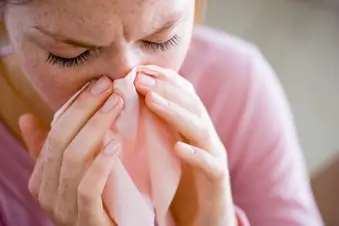
You woke up with a sore throat and a runny nose. You probably have:
- A cold
- The flu
Show Sources
Photo Credit: Pixland / Getty Images
REFERENCES:
Bloomsburg University of Pennsylvania: "Cold vs. Flu."
CDC: "CDC Says 'Take 3' Actions to Fight the Flu," "Common Cold," "Common Cold and Runny Nose," "The Flu Season," "Flu Symptoms & Severity," "The Flu: What to Do if You Get Sick," "Handwashing: Clean Hands Save Lives," "How Flu Spreads," "Key Facts About Seasonal Flu Vaccine," "People at High Risk of Developing Flu-Related Complications," "Questions and Answers: Cold vs. Flu," "Tips to Prevent Fluid Loss (Dehydration)," "Treat Other Flu Symptoms," "Symptoms of COVID-19."
Cleveland Clinic: "Colds versus the Flu: Which Do I Have and How Is It Treated?"
Connecticut Department of Public Health: "Tips for a Healthy Winter Workforce."
Duke Health: "Myth or Fact: Feed a Cold, Starve a Fever."
Flu.gov: "Prevention & Treatment," "Flu Symptoms."
KidsHealth.org: "Infections: Common Cold," "Is the Flu Vaccine a Good Idea for Your Family?"
Lucile Packard Children's Hospital at Stanford: "Upper Respiratory Infection (URI, or Common Cold)."
National Institute of Allergy and Infectious Diseases: "Common Cold: Symptoms."
Nemours Foundation: "Infections: Common Cold," "Is the Flu Vaccine a Good Idea for Your Family?"
Rennard, B. CHEST, October 2000.
Saketkhoo, K. CHEST, October 1978.
University of Nebraska Medical Center News: "Got a Cold or Flu? Try Chicken Soup to Ease Symptoms."
Mayo Clinic.
Up to Date: "Patient information: the common cold in adults (Beyond the Basics)," "Patient information: influenza symptoms and treatment (Beyond the Basics)." "The common cold in adults: Diagnosis and clinical features."
U.S. Dept. of Health and Human Services: "Flu Prevention and Vaccination."

